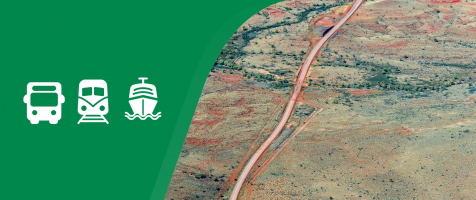Transport investment will also form approximately 45% of the WA Government’s Asset Investment Program (AIP) from 2021–22 to 2024–25.
The cost of peak period congestion was estimated at $1.5 billion per annum in 2016, increasing to $3.6 billion per annum by 2031. Also, the percentage of children who walk or cycle to school has declined from 75% in the 1980s to 20% in 2021.
Strategic justification
Continuation in the rapid investment growth in transport infrastructure is unsustainable from a financial, environmental and delivery perspective. Better coordination and planning, consideration of multi modal solutions, receptiveness to new technologies and policies, and an increasing non-build approach is required to help meet future challenges. This change will help underpin a transport network which is safe, efficient, resilient, accessible, and sustainable.
Sector challenges and opportunities
Government aims to provide a safe, efficient, resilient, accessible and sustainable transport system. To do so, transport networks and infrastructure must be effectively integrated across modes (including road, rail, active, air and maritime), efficiently linking people to employment centres, housing, schools, universities, hospitals and tourism attractions. Achieving this goal requires a highly coordinated approach and alignment between WA’s transport planning, investment, delivery, operations and governance arrangements.
As well as opportunities, the transport sector faces a number of challenges in the 20-year time frame of the Strategy. These challenges include congestion, reductions in public transport patronage, the scale of the state’s transport network, road safety, technological change and, at times, a fragmented approach to transport governance and investment.
Public transport patronage is falling, while peak demand on the road network is increasing. There are also limitations to the current governance and funding models in the transport sector are impacting on the ability to address the cross-modal nature of transport challenges in the future.
Technological change is impacting almost every aspect of the sector across both the passenger and freight network. The advent of low and zero emissions vehicles, such as electric and hydrogen vehicles, are poised to significantly alter fuel consumption and road funding. The choice and uptake of micro-mobility devices such as electric scooters and bicycles are increasing, and smart road infrastructure is having a positive impact on road efficiency and safety. New transport concepts such as mobility-as-a-service models have the potential to change how people travel.
The geography of the state also provides a challenge. Regional transport connections are vast, though often with lower demand. Roads are the most important, and often the only, link between regional communities and other centres. This is particularly relevant for remote Aboriginal communities who can be isolated both socially and geographically as a result of seasonal weather conditions. Maintaining a safe and efficient road network across the state is challenging and expensive.
The resilience of WA’s transport network is vital. Adverse events can lead to transport network failure or place additional pressure on a constrained selection of transport modes. It is important that efforts are made to increase the resilience of the critical infrastructure that underpins the network, and that greater consideration is given to planning for redundancy and network flexibility.
In terms of opportunity, WA is well positioned to take advantage of demand for its exports from the emerging global consumer class. To maintain international cost competitiveness for export products, WA needs to ensure its diverse freight and supply chains operate efficiently and minimise costs for business and consumers. Studies that complement the development of a metropolitan supply chain, linked to a new container port in the Fremantle Outer Harbour through Westport, will be integral to this. Perth Airport is a critical transport hub, facilitating international, interstate and intrastate economic activity and trade. Longer-term planning should consider the planned expansion of Perth Airport and the potential location for a new international airport to cater for long-term growth in demand.
Case study
In New South Wales (NSW), the Department of Transport, trading as Transport for NSW, is responsible for overall governance of transport systems. Transport for NSW was formed in November 2011 to take responsibility for all non‑service delivery aspects of transport system administration in NSW, including policy, planning and funding allocation. It absorbed the responsibilities of previous agencies, such as the State Transit Authority (bus service operator), the Public Transport Ticketing Corporation and transport‑related functions from the NSW Department of Planning and Infrastructure.
The integrated structure of Transport for NSW and its responsibility for all transport modes supports a focus on cross-modal, long-term future transport planning. The agency has developed the Future Transport 2056 strategy and vision to assess transport needs for a projected NSW population of 12 million people by 2056. For further information, refer to www.transport.nsw.gov.au

